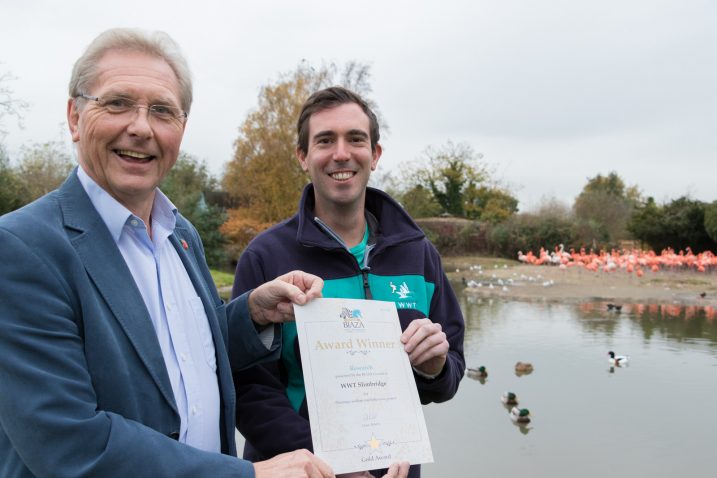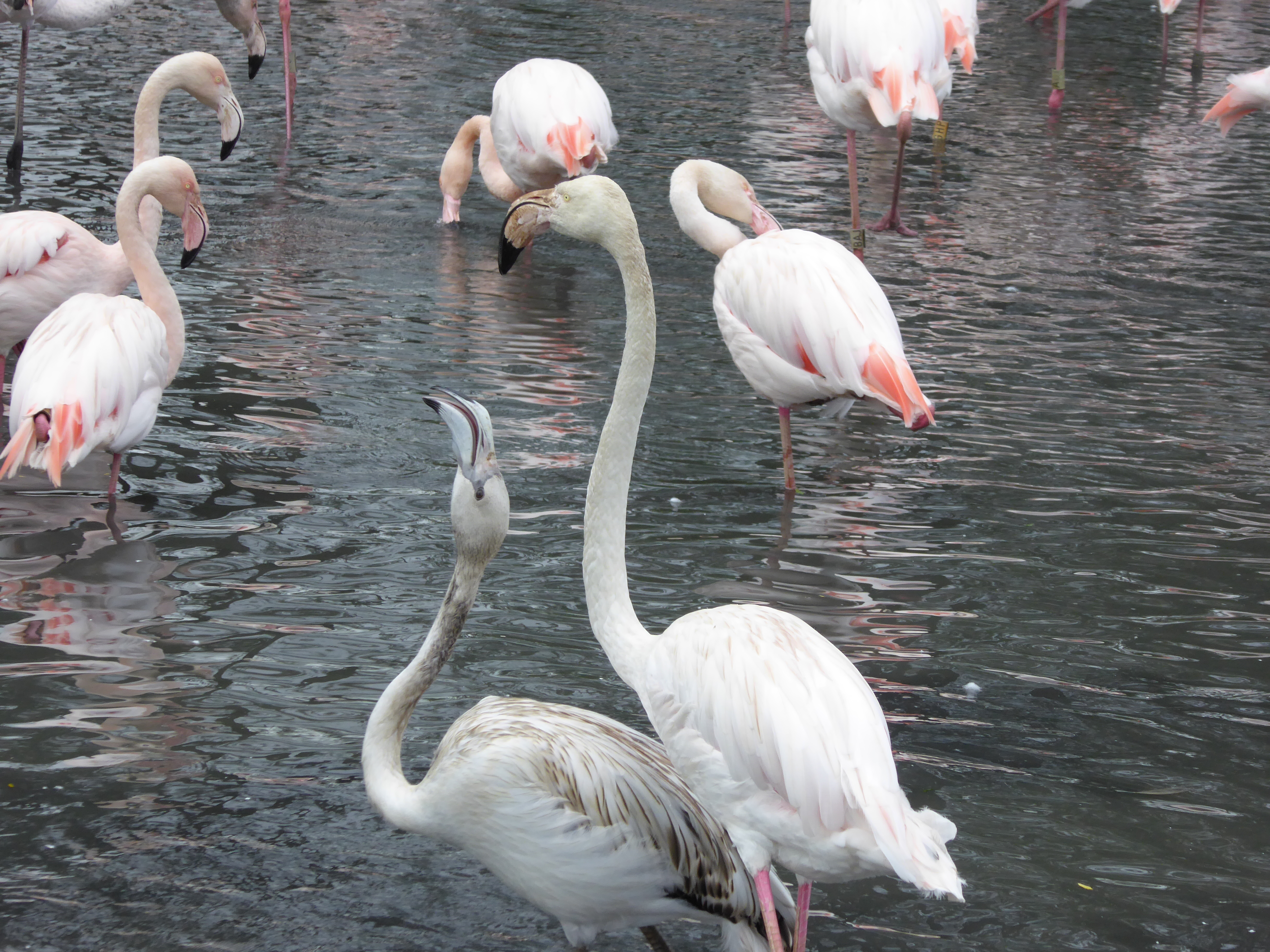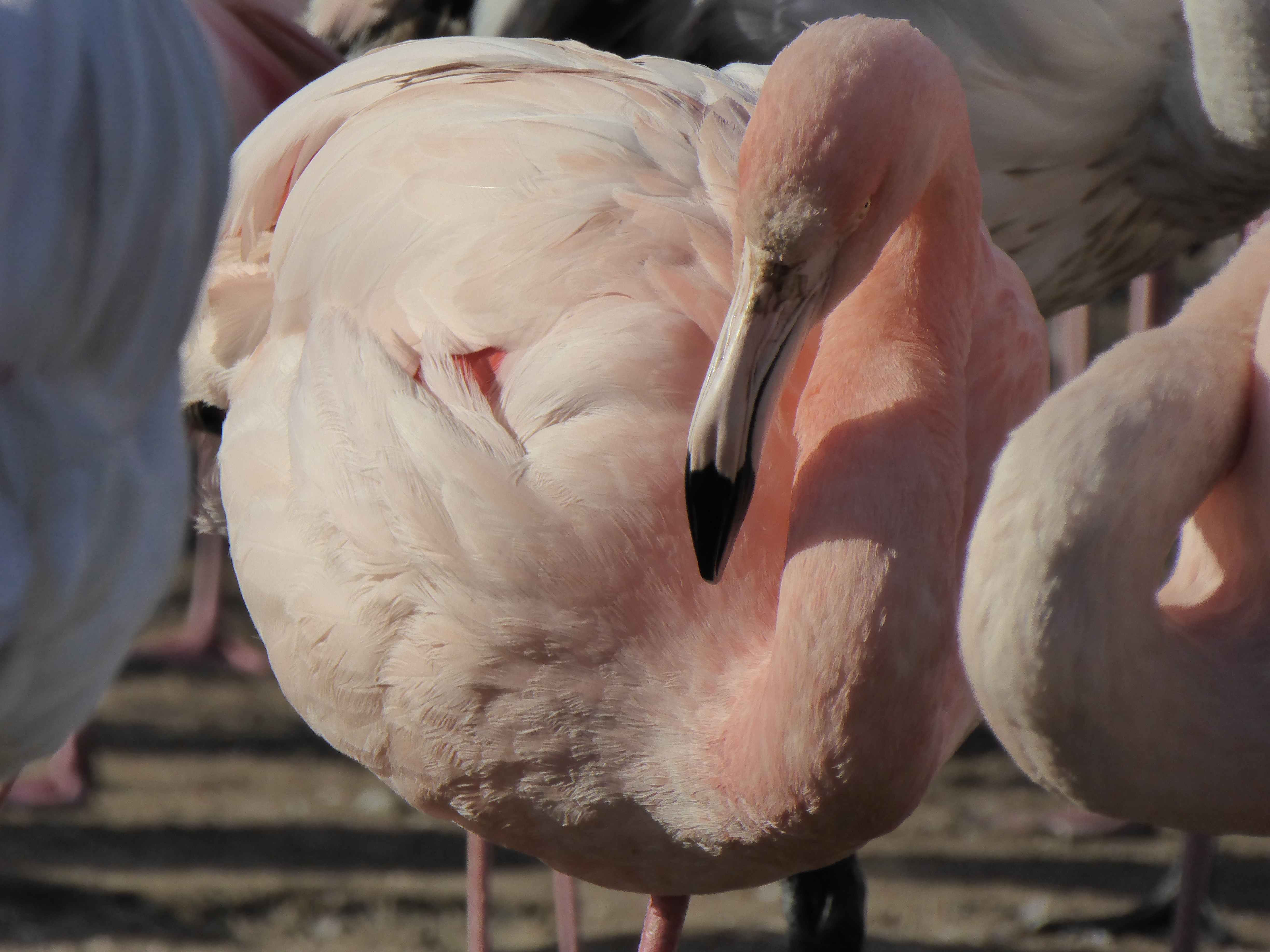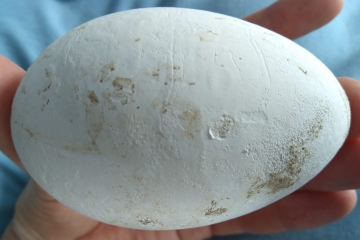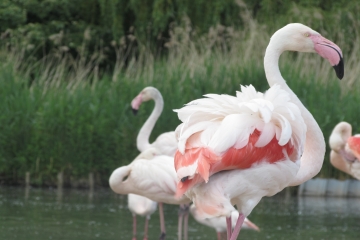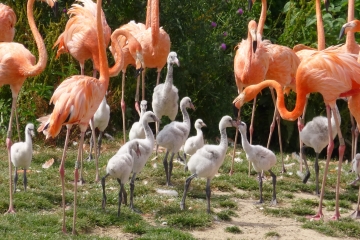It's all about the flamingo science!
Back in October, along with several other WWT colleagues, I attend the BIAZA (the British & Irish Association of Zoos and Aquariums) Bird Working Group (BWG) meeting at Chester Zoo, in my capacity as Research Officer for the BWG to spread the love for science and research in the UK's various bird collections. Flamingo research and projects on wildfowl were at the top of the agenda, and it's nice to see some many other zoological organisations getting involved with the research that WWT has been heading-up on this array of wetland species. By explaining to other organisations the types of projects that we at WWT have been running we can share what we have found and hopefully encourage others to do similar things with their own flamingos (and other birds).
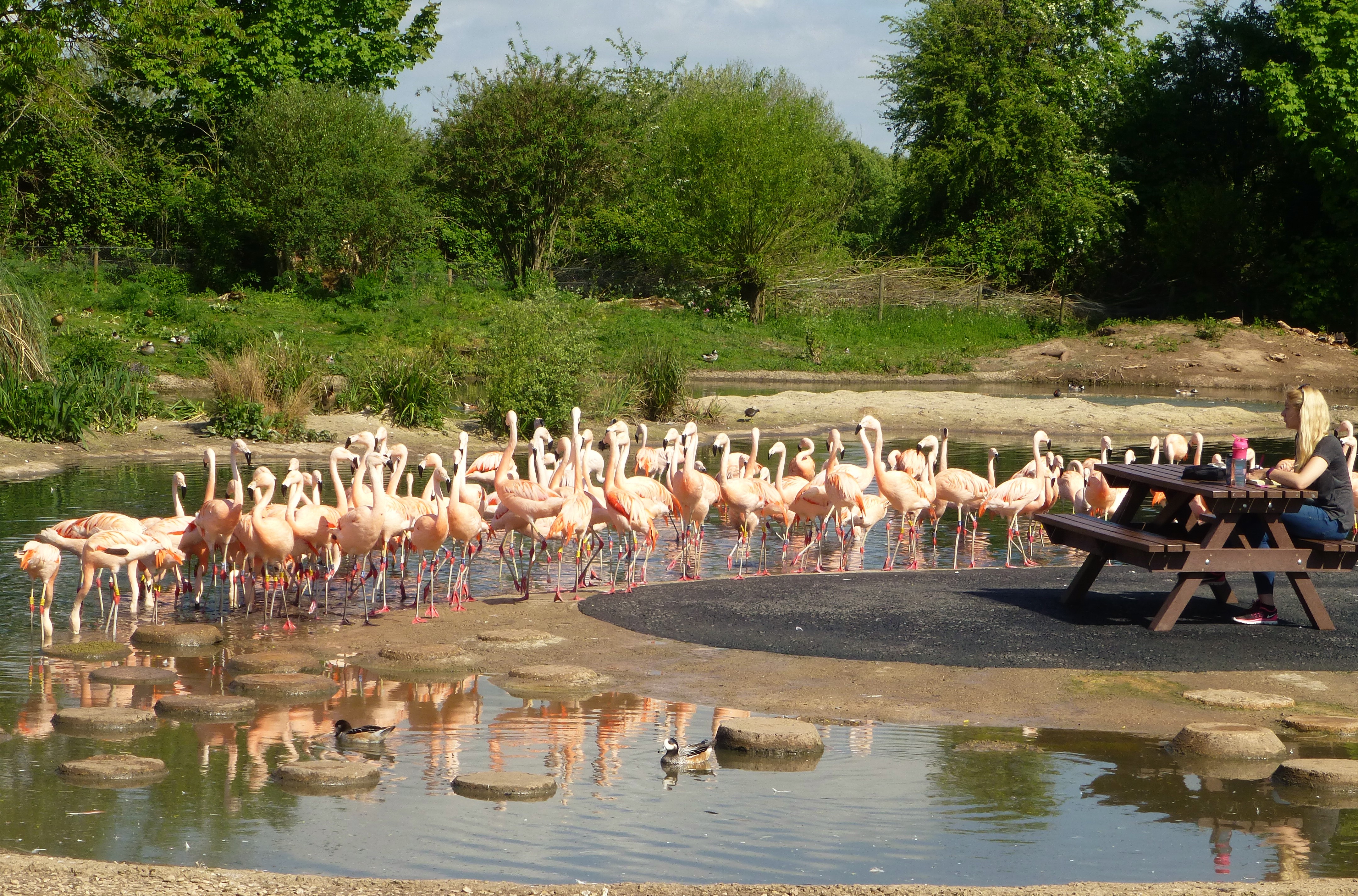 Observations carried out on the WWT flamingo flocks allow for up-close investigation of the bird's lives. Something that can be very difficult to do on wild individuals.
Observations carried out on the WWT flamingo flocks allow for up-close investigation of the bird's lives. Something that can be very difficult to do on wild individuals.
I care very deeply about the science we that do at WWT that involves the birds that we keep, as it provides a reason for why they are here and allows all WWT centres (with collection birds) to explain a little more about their behaviour and biology to the visitors that come through the door. In my role as Research Officer for the BWG I like to encourage those working with birds in their organisations to think about what research could be done with their animals; what questions could be answered; and how could they use a small dose of science to improve the lives of the animals that they are keeping?
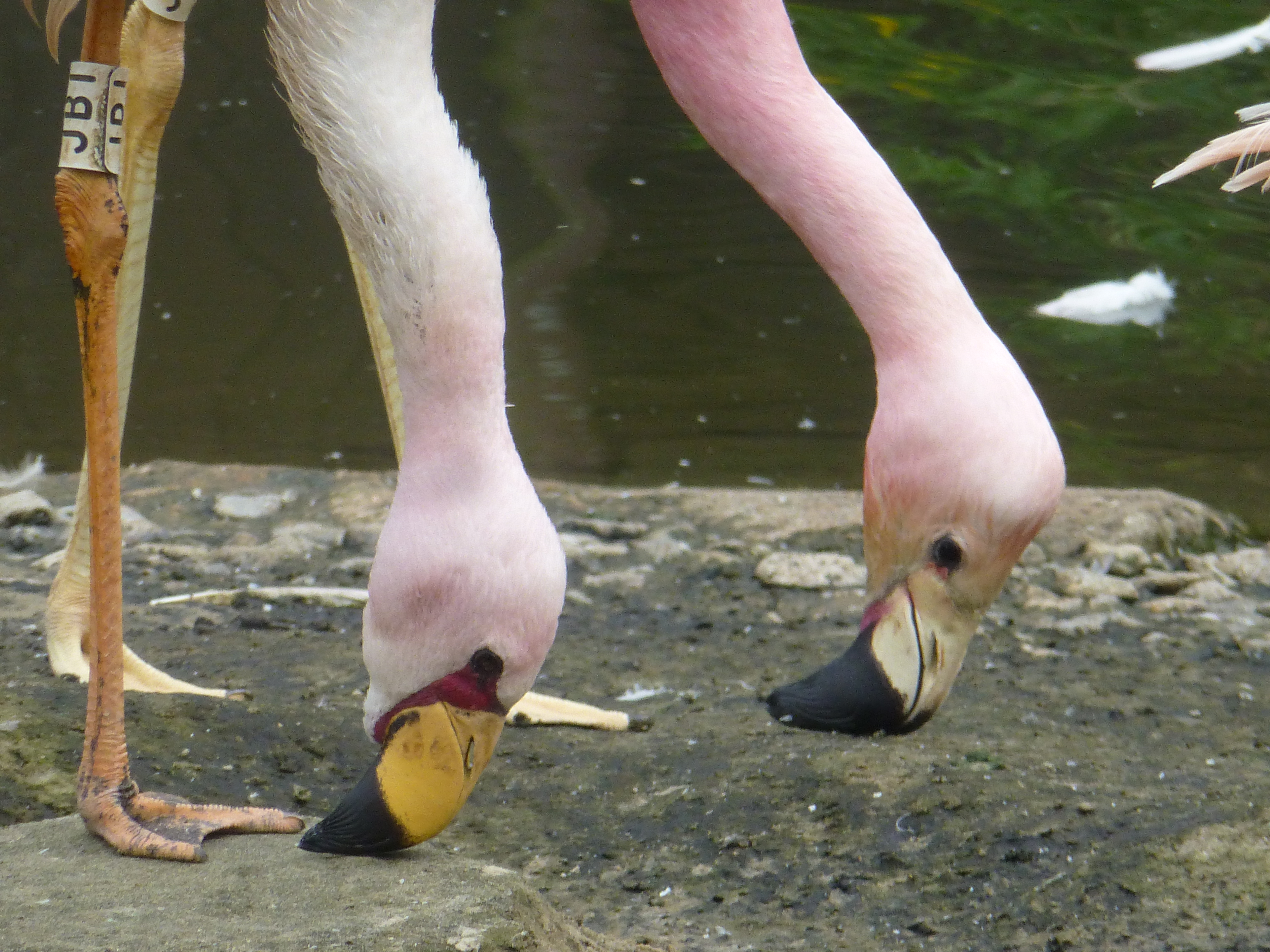 How do flamingos feed? Watching the interactions between birds in a group means we can give them their dinner without causing too many arguments within a hungry flock.
How do flamingos feed? Watching the interactions between birds in a group means we can give them their dinner without causing too many arguments within a hungry flock.
Back in June, WWT Slimbridge was very lucky to be win an award from BIAZA in recognition of the flamingo research that we have been carrying out over the past couple of years. This highlights not only the importance of these WWT-held birds to developing out understanding of what they do and how they act, but also highlights the excellent job of the WWT avicultural staff in managing these birds in a very natural way. After a couple of glitches in receiving the certificate, it finally arrived and WWT CEO Martin Spray was able to present to me officially in full view of the some of the birds that have helped Slimbridge gain such recognition.
So what sorts of science are relevant to flamingos? Well, we know that birds form attachments with each. And it would be interesting to find out more about when these attachments actually start. Parent flamingos generally find their youngsters rather irritating. See the photo below! A chick begging for food, and being ignored by its father. Flamingos are very good at caring for their young when they are small and grey and fluffy, but they can lose interest when the young are fledged but still try and hang around for a feed. So where do these chicks go (in their flock) and who do they hang out with? We have a student working on this currently.
What about colour? We all know it's one of the key defining features of flamingos. But how does it influence the behaviours of the flocks. There has been some work on this showing that perhaps birds use colour to distinguish between those that they like to make friends with and those that they are more likely to avoid. We hope to try and see how changes in colour over season after the long-term friendships that exist between birds in the WWT Slimbridge groups.
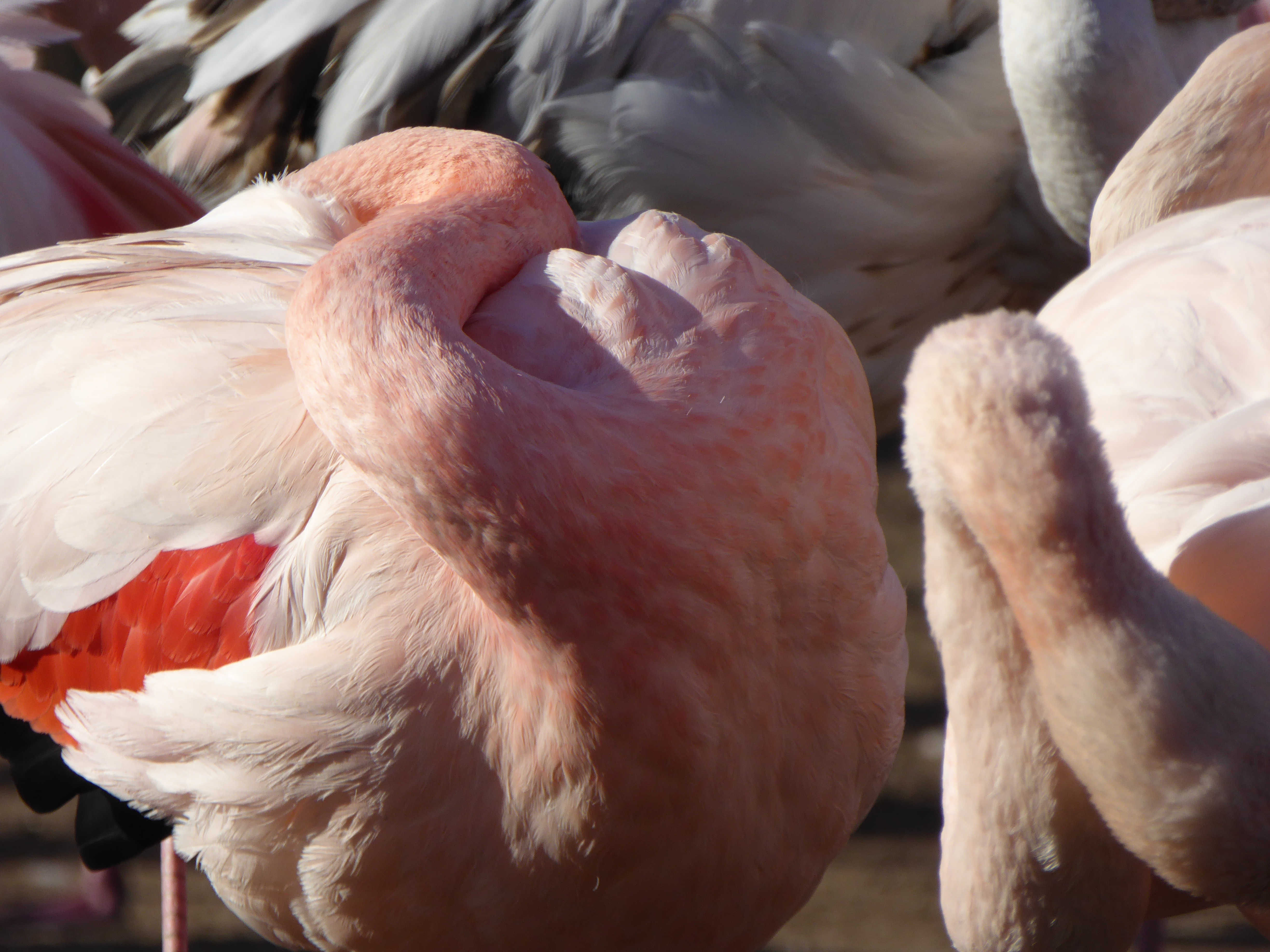 Where's my make-up bag?! A female greater flamingo preens her coloured preen oil into her plumage to enhance its "pinkness".
Where's my make-up bag?! A female greater flamingo preens her coloured preen oil into her plumage to enhance its "pinkness".
These two photos of this female greater flamingo show how she has changed colour from post-breeding into the coming courtship season, when the birds start to do their famous dancing and select a new mate. Her head, neck and breast feathers are a much deeper pink than the rest of her body. This is an example of the "flamingo make-up" that greater flamingos use to make themselves look more desirable to the opposite sex. And it's not just in the girls; both males and females use this "make-up" to get as pink as they possibly can. By keeping these flamingos at WWT, we can show-off this behaviour to visitors; explain what it means and why the birds do it. And get them to appreciate something that is unique and really quite cool that might otherwise be over-looked.
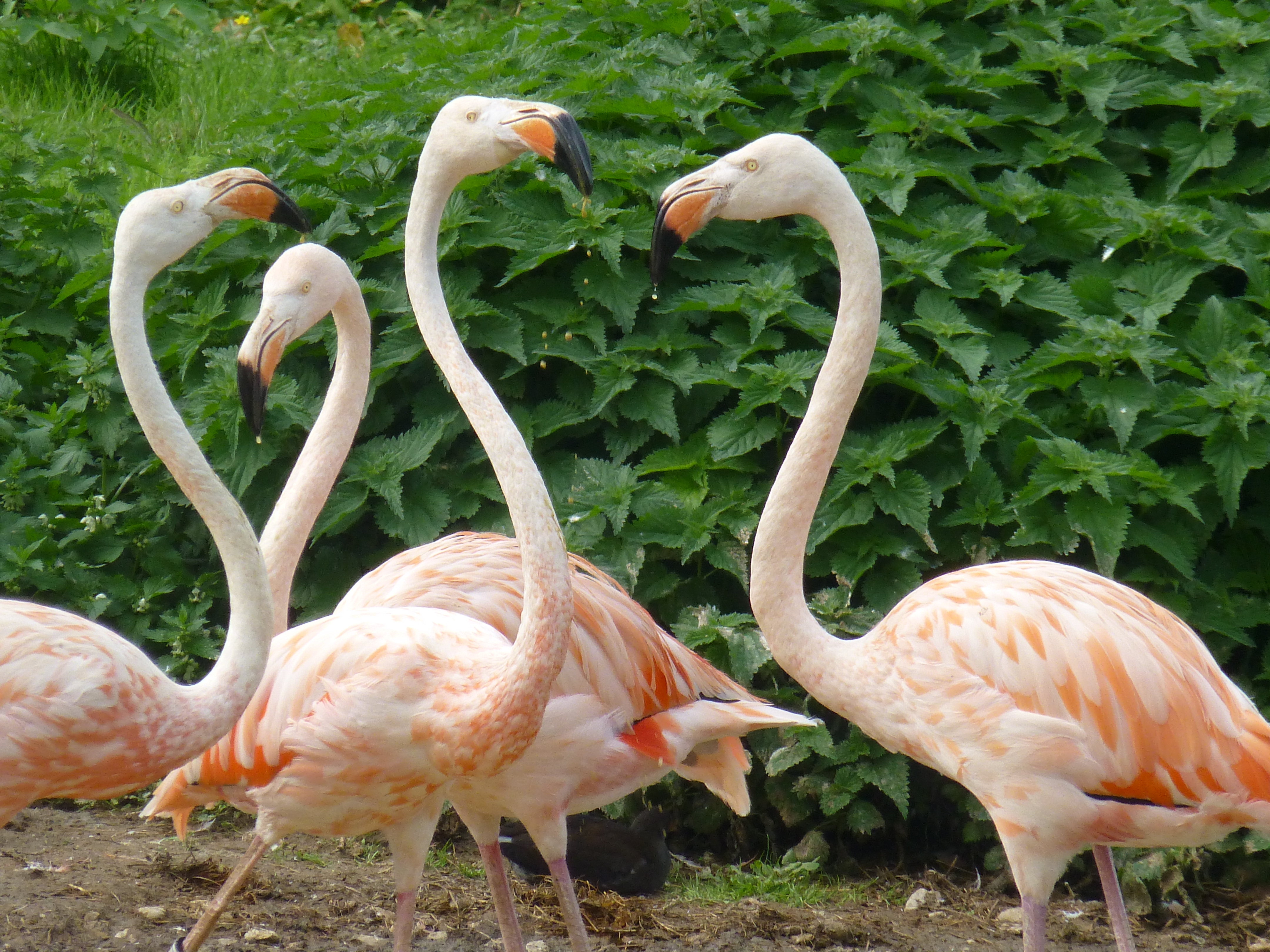 Jaded and faded? Parent Caribbean flamingos may take a year off from breeding, as it takes a lot out of them! Now is a good time of the year to spot this year's parents, as they really stand out against those birds that didn't breed and have their lovely bright pink feathers.
Jaded and faded? Parent Caribbean flamingos may take a year off from breeding, as it takes a lot out of them! Now is a good time of the year to spot this year's parents, as they really stand out against those birds that didn't breed and have their lovely bright pink feathers.
So I hope you can see that science is really important to why we keep bird at WWT Slimbridge and at the other centres that house these birds. I am very grateful to BIAZA for recognising the work that we have done in investigating the lives of the WWT flamingos, and it is really nice that the results from these projects are seen as useful to those housing and keeping flamingos in animal collections. It's massive thumbs up to Sparky, Phil and all flamingo avics for their flamingo care, as without such good management the birds would not behave naturally and then we wouldn't be able to do the good-quality science with them that we can. It's fitting that in this 70th birthday month, we can see that the core reasons as to why Sir Peter Scott brought together a collection of wetland birds at Slimbridge- for education and public engagement- are still at the heart of why these birds are here.
